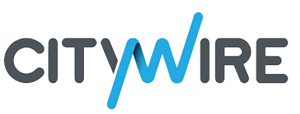
Personal Finance
Is My $10 a Day Starbucks Habit Derailing My Retirement? Here’s What I’m Doing to Fix It
As Featured in












If you buy a coffee from Starbucks every morning, you might spend an average of about $10 a day just to avoid making your own cup of coffee. What you might not have considered is how quickly this seemingly small number can add up. Taking that average amount of $10 spent daily and multiplying it by 30 days adds up to $300 a month going toward Starbucks alone. If that number already sounds way too large, just wait – it gets a lot worse! Consider that if you put that $300 into investments every month, and receive a reasonable annual return of six percent, the money you invested could turn into $292,344 – almost $300,000 – over a period of 30 years. Plus, consider that that initial investment is only costing you about $108,000, which means you’re taking home a total of around $188,000 in interest (which is the equivalent of “free money”). We can also consider a slightly less ambitious example of 20 years’ investment, where with the same 6 percent rate of return you’ll reach $139,605. Or if we do the opposite and expand the scope of our example to 40 years with the same rate of return, the total will skyrocket to $572,203. Clearly, the sooner you start saving, the more of a financial cushion you can expect for your retirement.There are people who go out there and spend $300 a month on Starbucks to get their daily fix. One of them may be you. But do you know how gravely this is affecting your retirement?
We all need help getting our finances in order throughout our lifetime.
Look through our database to find the most trustworthy financial advisors in your area.
Curious about your own savings’ potential for growth? Enter your own prospective investment scenarios into the Bankrate investment return calculator to see how much your money could grow with some strategic investment and, ideally, a few decades of time. Convinced it’s time to start putting your $10 a day Starbucks habit (or any expensive habit, like eating out multiple times a week) in the past? Keep reading for our point-by-point advice on how to fix the problem and get your retirement plans back on track. An additional consideration – and reason to save as much as you can for retirement – is that roughly $300,000 saved through smart investment (as we highlighted in our first example, above) will go much further after your retirement. For instance, if you live for another 20 years after the initial date of your retirement, that would add an extra $10,000 to Social Security and any other retirement funds you already have set up (such as what you’ve already put toward your 401(k)). A lot of us tend to be thinking about ways to go about improving our daily behaviors to make our lives better in some way, whether that’s physical health, mental health, or financial health. If you’ve decided that cutting back on Starbucks (or some other expensive coffee shop) is the habit you’re going to cut out, you’ll want to replace it with coffee made at home. Even if you buy a top-of-the-line luxury coffee machine like this 9-cup stainless steel drip coffee maker by OXO ($229.99) or even the coveted Breville Bambino Plus Espresso Machine ($499.99), you’re still spending less total than the amount you’d spend on coffee after about one or two months. Even if you add in the cost of all the additional ingredients you’ll need for your perfect at-home latte, the monthly cost is still significantly less expensive than buying your cup of Joe at Starbucks every day: These are rough estimates that will vary based on your location, but that totals about $28.33 per month on ongoing purchases you’ll need to make coffee on a daily basis, in addition to whatever amount you end up spending on a coffee filter. That’s a lot less than Starbucks, even if you only purchase the cheapest coffee option there each day! For those who are considering dropping coffee altogether, it may also have additional benefits aside from just the monetary benefits. There could be health benefits that come along with it (insert weight watchers commercial here). It doesn’t have to be Starbucks that you remove or cut back on to save that $10, either. Unless you live like a complete ascetic, there are probably tons of spending habits that you could potentially choose to eradicate from your life and replace with more affordable choices. For instance, if your daily Starbucks is an absolute essential for your productivity and overall happiness, but you don’t mind eating out less and cooking home more, you could save the equivalent of $300 a month by getting takeout for fewer meals every month. Perhaps all it will take to save $300 a month is deleting your favorite delivery app from your phone. You could download grocery store apps and save that much every month through strategic couponing. Or perhaps you spend hundreds every month splurging on new clothes when you could instead be finding high-quality used clothes on eBay or at local thrift shops and putting that money toward your retirement. Whatever your financial priorities might be, it’s a good idea to start by assessing your spending habits carefully to find the areas where you think you could be a little more frugal. Then make a commitment to save the equivalent of $10 a day in whatever area you’ve chosen, whether that’s food, entertainment, or some other form of unnecessary spending. Perhaps this informal “self-audit” will reveal that you could be saving even more, a topic we’ll discuss as part of list item #2… "You would think that $10 a day wouldn’t make a significant difference when it comes to how one lives out the tail end of their lives when they actually start entering into retirement," says Leonard Kim of AdvisorCheck. "However, the difference it makes is huge. It’s one of the biggest factors, when you factor in how inflation works, that sets new retirees off on the right path to have enough working capital to make it through retirement, without running out of cash,” Leonard continued. In case you’re not convinced, here’s what some relatively small amounts of daily money could turn into over 30 years, if invested and with annual returns of 6 percent. Look at this infographic to see what a monthly investment of $20, $30 and $40 a day looks over the course of 20, 30 and 40 years. *calculated using annual compound frequency However, it’s important to be realistic when planning to save a certain amount on a regular basis. One of the mistakes that destroys otherwise solid savings plans is expecting your future self to make unrealistic sacrifices so that you can save more. You need to budget a certain amount of your income for purchases like healthy and satisfying groceries, self-care, hobbies and recreation as well as occasional indulgences such as vacations, concert/movie tickets, restaurant outings and other entertainment. Budgeting experts like those at NerdWallet recommend a 50/30/20 budget: You should be tailoring the specific percentages of spending in each area to your specific financial circumstances, such as your income and your most significant life priorities. Ultimately, the key is to make some bearable sacrifices now and apply reasonable moderation toward the luxuries and indulgences you choose for yourself. Most importantly, remember and take inspiration from the fact that you’re making these sacrifices in the present so that in the future, you and your loved ones can experience even more enjoyment with greater financial resources at your disposal thanks to your careful, savvy decision-making. It’s a great idea to take your paycheck and direct deposit the money into a separate retirement- and investment-focused account, or with a financial advisor (we’ll get into this more in #5). This will have the effect of constantly increasing the flow of cash you have operating in that account, especially if your 401(k) contributions are currently maxed out – an excellent goal to aspire to if establishing financial security in retirement is a major priority. Another helpful tip: many accounts allow you to schedule recurring automatic transfers of whatever deposit amount you’ve chosen from your main checking account (e.g. $300 on a certain day every month). Consider setting up these automatic transfers to ensure that your retirement savings/investment plan isn’t foiled by something as silly as simply forgetting to transfer the money you had intended to save on a regular basis. How can you supercharge your retirement savings for even greater financial security in future decades? There are a number of financial products you might want to consider. For instance, you might want to set up an IRA (individual retirement account), which offers unique tax benefits to maximize your retirement savings. comes in several different forms. According to the Charles Schwab website, IRAs come in a couple forms, known as Roth IRAs and Traditional IRAs: In addition, perhaps your most pressing financial goal isn’t retirement, but rather your child or children’s future college fund. In that case, you’ll probably want to go ahead and set up a 529 college savings plan. The SEC describes these “qualified tuition plans” as “tax-advantaged savings plan[s] designed to encourage saving for future education costs.” Feeling daunted by all the options available to you? This stuff can get extremely confusing, so don’t feel bad if we’re starting to lose you. For advice on what kinds of financial products would be best suited to your situation, the best source of knowledge is by far the informed advice of a professional financial advisor, the benefits of which we’ll explain in item #5… Meeting with a credentialed financial advisor is one of the best ways to get your finances in the best possible order. Doing so can help you make sure that there are no unexpected surprises when your retirement finally arrives, as generic financial resources like retirement calculators might not factor in often-overlooked retirement expenses (such as the cost of staying at a retirement home or of maintaining your current standard of healthcare). A financial advisor can provide advice on setting savings goals that is realistic and specifically tailored to your situation. This is especially true as we face a period of extra-high inflation that’s putting even more strain on Americans’ budgets. Major market upsets like this one, as well as recessions, continue to happen with a frequency of roughly every five to ten years. It’s a good idea to prepare in every way you can to make sure you don’t get left behind – a financial advisor has the expertise to help you do so. Financial advisors have a ton of important skills you might not have considered, assuming that their only job is to manage your wealth so that it grows over time. These include: You might have held the misconception that financial advisors are only a necessary resource for rich people, but there’s a lot they can help us with, no matter what our income level. Convinced that working with a financial advisor is an effective way to set yourself up for a financially comfortable retirement? Finding the right financial advisor is absolutely essential – and in addition to having legitimate professional credentials, you also want to make absolutely certain that the financial advisor you plan to work with is honest and worthy of your trust. Our AdvisorCheck search tool is designed to help you find reliable financial advisors in your area, providing you with the information on prospective advisors that you need to confirm that their record is clean and that you can trust them to manage your money. AdvisorCheck consolidates hard to obtain information into a detailed report encompassing your current or prospective advisor’s registrations, legal records, and personal conduct so you can be sure you haven’t missed any serious red flags. Plus, once you’ve reviewed their background check and hired an advisor, AdvisorCheck also notifies you if your advisor files for bankruptcy, for example, and flags any disclosures that may occur during the career of your advisor. For even more advice on how to make sure you hire the right financial advisor, here’s what you should be sure to avoid doing when looking for an advisor. Written by Billy Quirk Fact Checked by Dan Hattori Reviewed by KJ Kim Disclosure The information provided in this article was written by the research and analysis team at AdvisorCheck.com to help all consumers in their financial journeys, by providing the resources and the insights to help improve one’s financial health, make it through recessionary and inflationary periods of time, and save their earnings to use them towards building a secure financial future. Unauthorized reproduction or use of this material is strictly prohibited without prior approval. Any parties interested in content syndication, references, interviews, or PR, please contact our marketing team at marketing@aimranalytics.com AdvisorCheck.com is an independent data and analytics company founded on the principles of helping to provide transparency, simplicity, and conflict-free information to all consumers. As an independent company providing conflict-free information, Advisorcheck.com does not participate, engage with, or receive funding from any affiliate marketing programs or services. To become a free AdvisorCheck member, visit advisorcheck.com/signup. Remember: The Money You Save Up Can Go Even Further After Retirement
If You’ve Just Realized That Your $10 a Day Starbucks Habit Has Been Derailing Your Retirement, Here’s What You Can Do to Fix It
1. Choose a Habit to Remove from Your Life, Whether That’s Starbucks or Something Else

“Dropping my daily coffee habit personally wasn’t just about the money,” says Norepi Walt, author of Wish You Were Her(e) Wish You Were Her(e). “While I was often tempted to buy the extra sweets and snacks that Starbucks had to offer, I was able to avoid that when I stopped going on my Starbucks runs. I have less weight gain from sugary beverages now, which is awesome. It was a 15 lb difference for me!” Nori continued. 2. Consider Bumping Your Planned Monthly Savings Up Even More, But Be Realistic

Depending on your income and expenses, you might be able to bump your additional retirement savings from $10 up to $20 a day ($600 per month), $30 a day ($900 per month), or even more. 
These numbers might impress you enough that you’re inspired to start trying to save hundreds of dollars more every month, and that’s an understandable response. The appeal of saving up more than $1.1 million for retirement could make almost anyone consider trying to invest $1,200 per month.
3. Create a Separate Account for Depositing the Money You’re Now Saving

4. Take Advantage of Additional Financial Products

5. Meet with a Professional Advisor to Get Your Finances in Great Shape

Use AdvisorCheck To Find a Financial Advisor You Can Truly Trust
